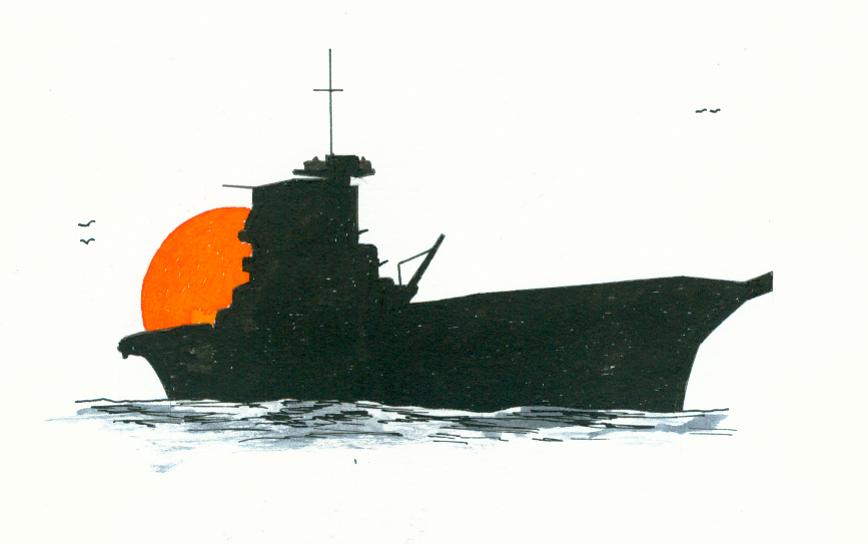USS Saratoga
Design dated 18-02-1922
Lexington-class battle cruisers
The Lexington-class battlecruisers were in 1911 asked for as a response of the huge Japanese Kongo-class. Not earlier as 1916 was an actual building under the Naval Act of 1916 allowed although postponed due to needs of escort ships and anti submarine vessels in this stage of the First World War. The Washington Naval Treaty of 1922 finally was the end for this class. Two of these battlecruisers were converted into aircraft carriers namely the Lexington and the Saratoga. The General Board specified the characteristics of an aircraft carrier using the hull of a battle cruiser on 17 February 1922. This design was sent on 22 April 1922 to the Secretary of the Navy/
Dimensions 850.0’ (water line) x 104.10’ (waterline) x 24.2’ and a displacement of 33.000 (treaty)-38.830 (normal) tons. Length flying deck 862.0’. Electric drive machinery with 16 supplying 180.000 ehp allowing a speed of 34 knots and with a speed of 10 knots a range of 10.000 nautical miles. Coefficient longitudinal 0.567. Freeboard at side 46’. Total depth at M.P. measured at point of uppermost strength DK 74.3”. G.M. 6.88’. Tons per inch immersion 28.0 waterline=135. Coefficients at normal displacement of 38.830 tons: longitudinal 0.588, block 0.548. midship 0.982 and displacement-length 63.5. The armament consisted of 8x2-8” (2x2 fore and 2x2 aft). 4x1-21” torpedo tubes (2.P.&S.) and 12-5” anti aircraft guns. The armour included of a main side belt with a width of 9.4’, depth below the waterline 7.6’ and a thickness of 7”&7” to 5”. Displacement 38.830 tons (normal): hull complete 21.622 tons, hull fittings 2.432 tons, protection 14.61 tons, steam engineering 5.880 tons, reserve feed 500 tons, battery (8-8” guns) 662 tons, ammunition 419 tons, equipment 1.124 tons, outfit and 2/3 stores 941 tons, aeronautechnical wgts. 749 tons, fuel oil 2/3 full supply 2.400 tons and a margin of 640 tons.
Source
The so-called Spring Styles Book 1 (March 1911-September 1925). Naval History and Heritage Command. Lot S-584-182. Preliminary designs prepared by mostly civilians working at the Bureau of Construction and Repair (succeeded by the Bureau of Ships nowadays the Naval Sea Systems Command) under supervision of naval architects of the Navy Construction Corps. A major part of the drawings was presented to the General Board which advices the Secretary of the Navy.



